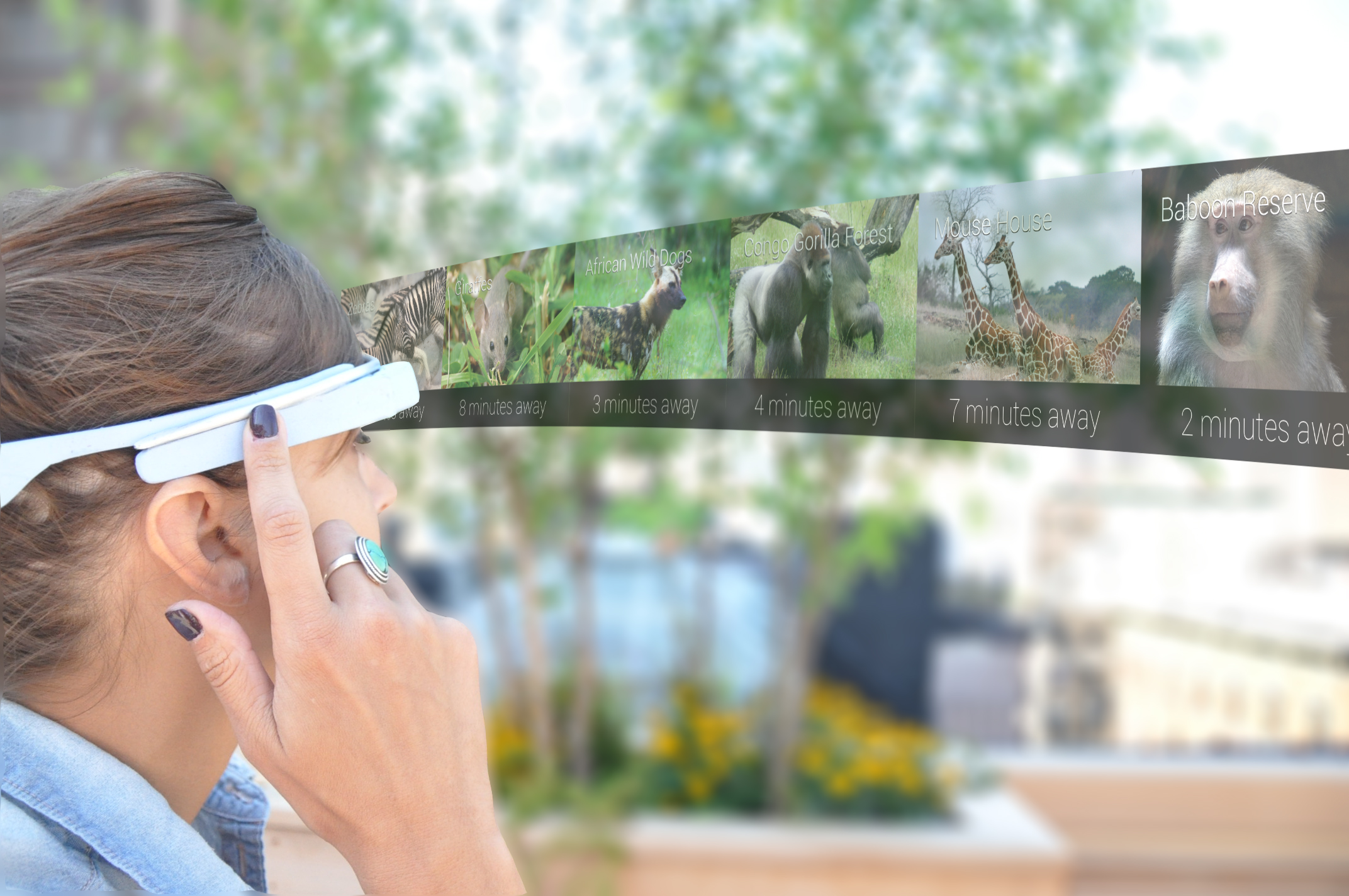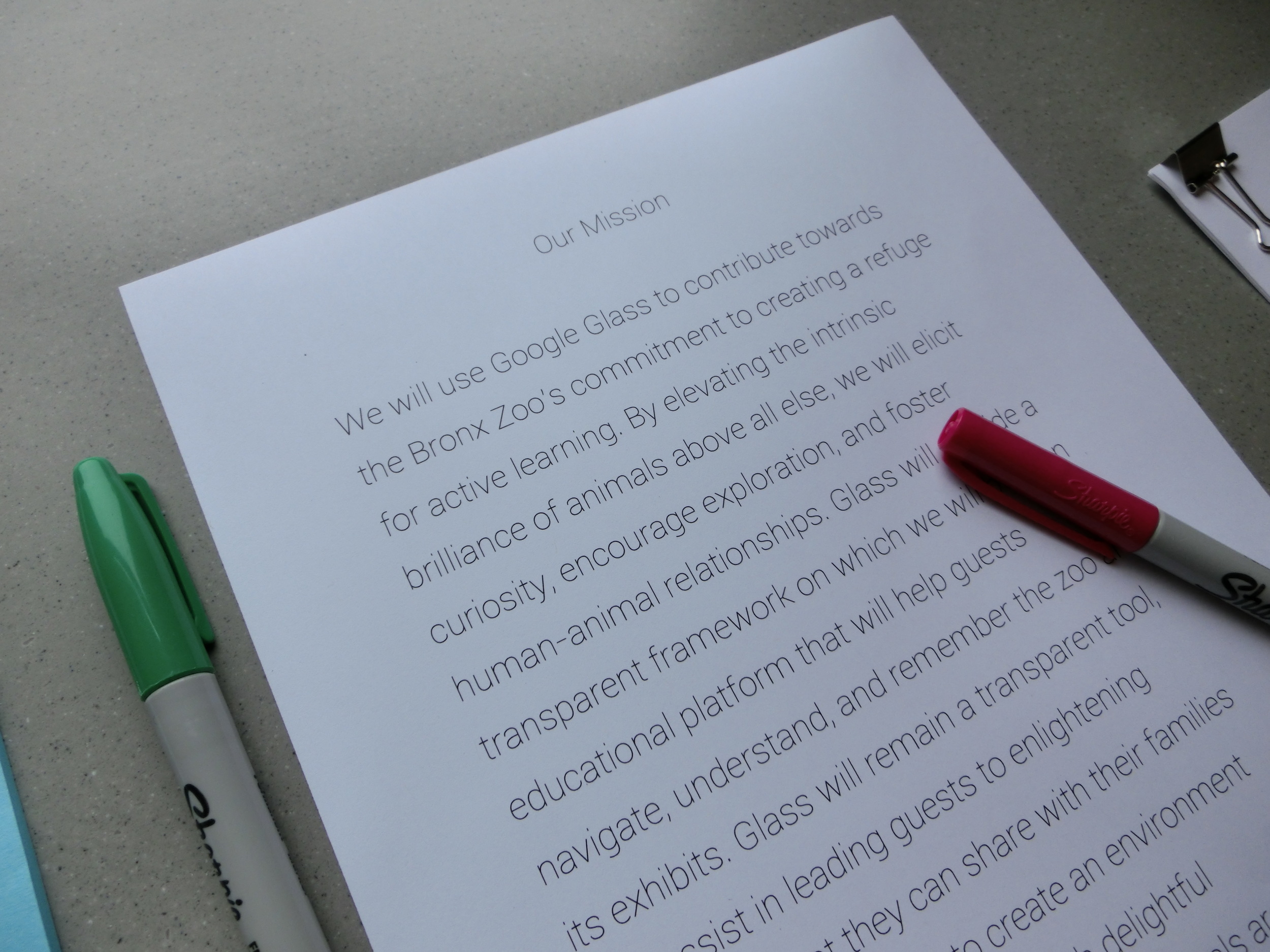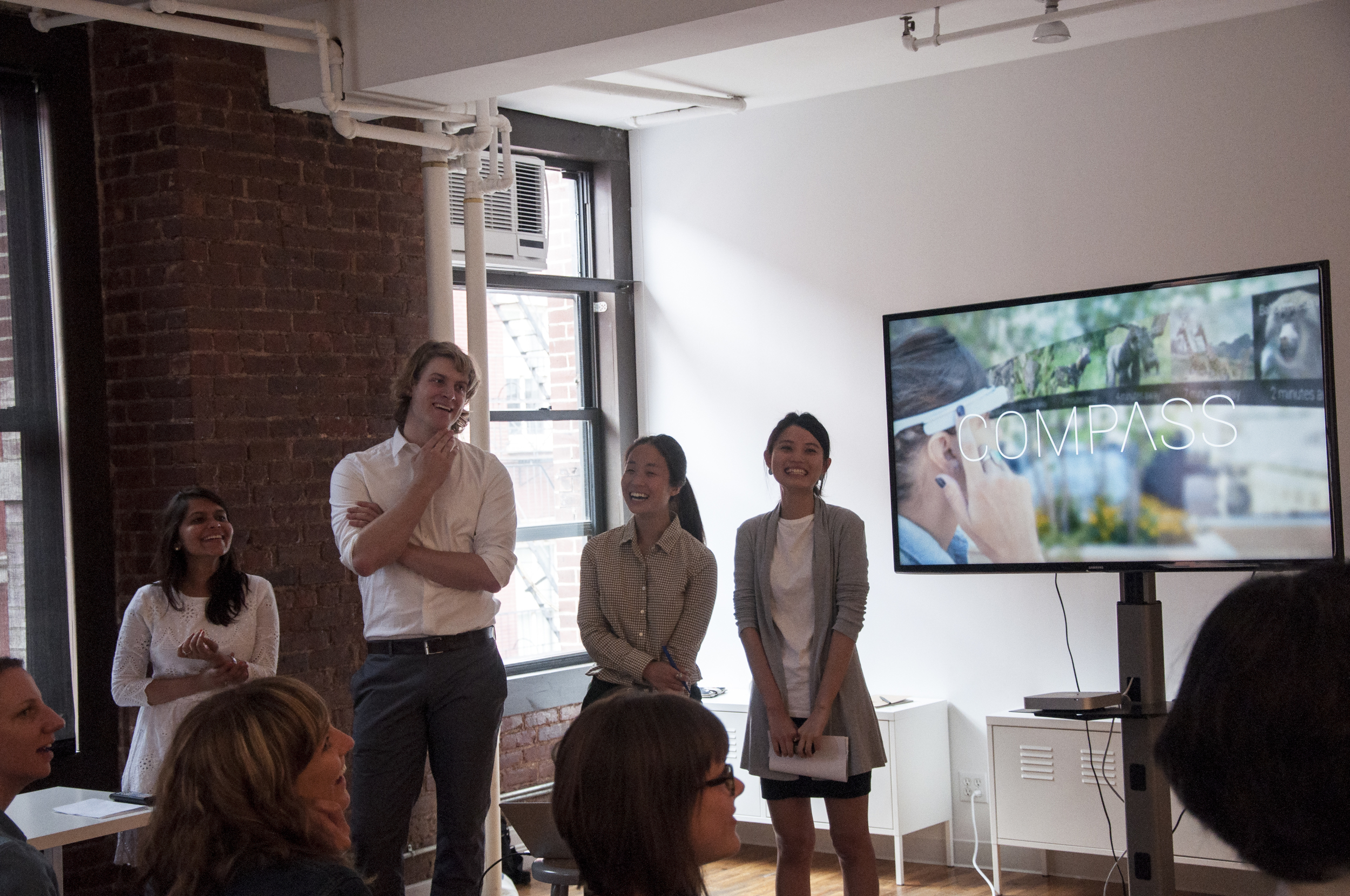Index
Bronx Zoo Through Glass
A summer internship project done at Moment Design NY where a team of four interns (experience designers + graphic designers) looked at designing a different visitor experience at the Bronx Zoo. Our focus was to explore emerging technologies, and environmental interactions leveraging heads up displays, specifically Google Glass. The new service will enable park visitors to access headsets, navigate the zoo, explore animal habitats, and stay connected with their party.
The Opportunity
The goal of this project was to explore the ways in which wearable technology like Google Glass can enhance everyday experiences. We decided to focus on the visitor experience at the Bronx Zoo. With Compass, we strove to minimize user interaction with the device itself and allow visitors to focus on the world around them. We believe that nothing should stand in the way of a zoo visitor and the incredible, enriching content found in the zoo. Compass would help visitors navigate to zoo exhibits and upon arriving at an exhibit Compass is designed to support exploration and learning, helping visitors to learn as little or as much as they like about animals and their environments. We recognized the desire for visitors to create and curate lasting memories with the people around them. We designed Compass to be supportive of these types of interactions, and to capture moments digitally when appropriate.
In our approach we’re designing with Glass for a very specific context. We’ve designed a service that contributes to a real world experience. In a society that may be skeptical of this new technology, Compass aims to give the public access to the Glass platform with limited commitment.
GLASS MADE SOCIAL
Compass offers a completely new way to explore the zoo and discover new interests by leveraging the capabilities of Google Glass. Compass is also designed to foster interactions between multiple people in a group and catered for the zoo content. This is a major differentiator from existing Glass interface and applications which are criticized to be individual and isolated engagement with the technology.

















The Impact
The biggest challenge in this project was transitioning Google Glass, which has been criticized as being an isolated and individual experience, into one that can enrich social and environmental interactions. By introducing Glass to an environment like the Bronx Zoo, we’ve created an opportunity for Google to improve the social perception of Glass from an isolated experience to one that enhances social interaction. We believe a partnership with an organization such as the Bronx Zoo would be a welcome chance for Google expand the exposure to Glass as well an opportunity for the Bronx Zoo to embrace a digital future.
The Audience
In our early research, we spoke to zoo visitors, staff, budding zoologists and conservationists and conducted our own observations at the zoo. We focused our design efforts on the group experience for a family or group of friends who see a trip to the zoo as an escape from everyday life, a means to strengthen their relationships, or create new memories.
When at the zoo, visitors care about seeing the animals, learning, and making memories. The experience is often nostalgic, but navigating the park in the moment, with a group, can be stressful. By operating with limited user input, Compass allows visitors to focus their attention on the exhibits in the zoo and the people closest to them. Compass leverages the power of an always on, always listening device and encourages visitors to ask questions about animals as if they were speaking directly to an expert. Asking questions is a natural behavior that we observed in action within the exhibits in our field research, and Compass supports this behavior with little-to-no manual interactions for the park visitor.












